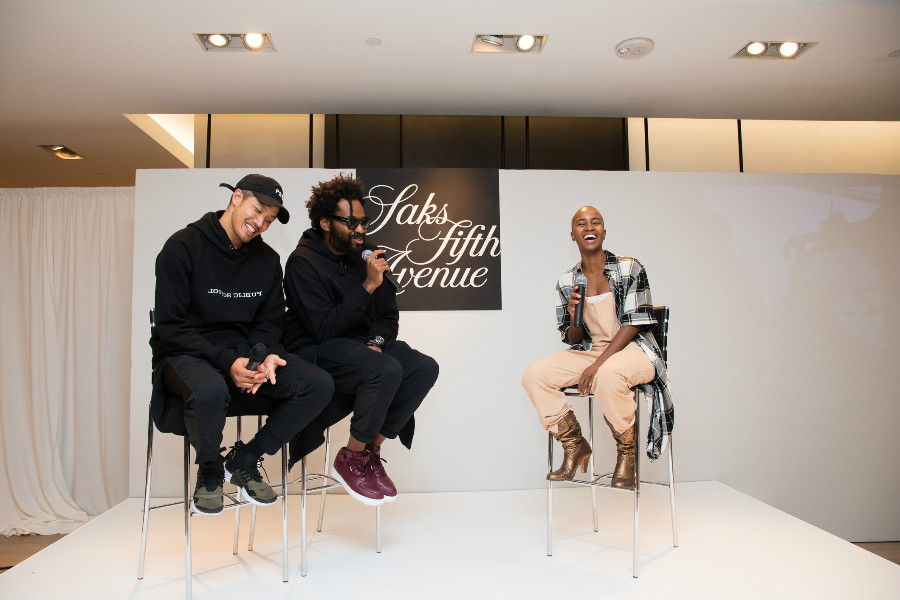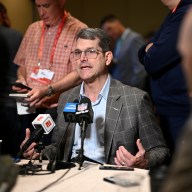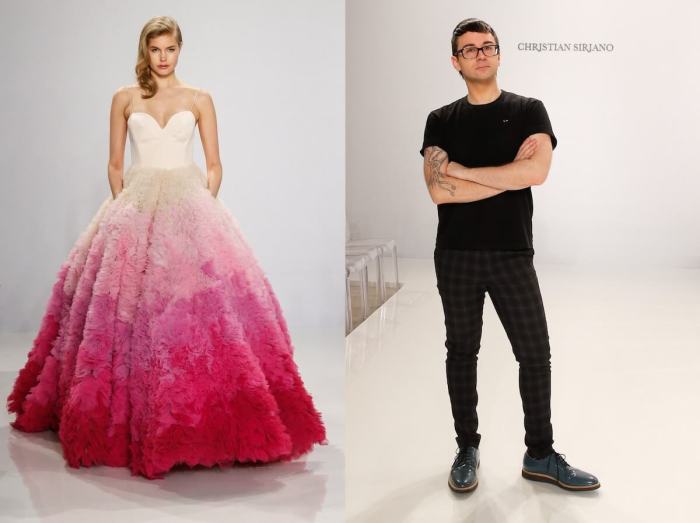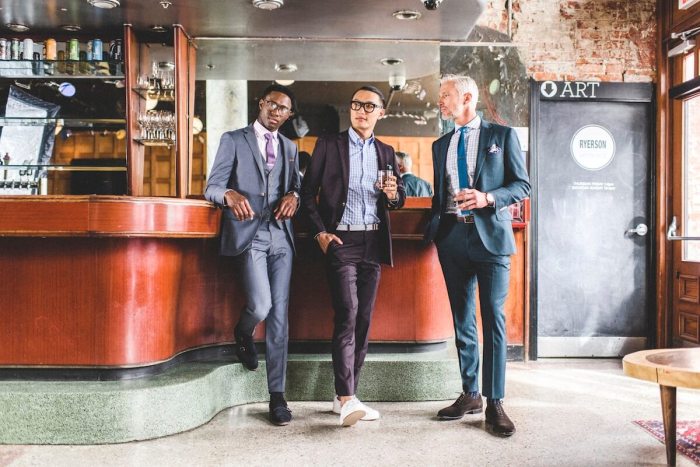Public School designers Dao-Yi Chow and Maxwell Osborne have grown from fashion darlings (they were the only menswear brand chosen as part of the CFDA’s Fashion Incubator in 2010) to a major driving force at one of New York’s biggest design houses (they currently helm DKNY in addition to their own label). The New Yorkers, known for their ability to mix street, luxury and playful tomboy silhouettes, stopped by Boston’s Saks Fifth Avenue to celebrate the arrival of their latest collection and their new game-changing collaboration with New Era. It’s funny because Boston considers itself a rival of New York, but New York doesn’t quiet see Boston the same way. Since you’re so representative of NYC, as a brand and designers, do you think that helps or hurts you in the Boston market? What about other “rival” cities? Is it a tough sell? Do you feel these past few years have changed you as designers — especially having come from the CFDA/Vogue Fashion Fund microscope? Who’s taught you the most? Let’s talk about New Era collaboration — team logos are such a sacred thing. Was it intimidating to approach the project? Since NYC and the people living there are your muses, have you see her sensibilities change over the years? Is there a difference in what a New Yorker wants to wear?
Dao-Yi Chow: It’s so ingrained in what we do that it doesn’t feel like sell to us. It’s what you get when you experience Public School. You should be able to get a New York vibe, but it’s not made to be an “our city is better than yours” type of thing. I also think, we hopefully represent every big city — sophisticated ease and the functionality that gets you through the entire day — those are the sensibilities that anyone in a big city can appreciate.
Maxwell Osborne: I think there’s been a maturity that we’re continuously learning from. Season by season and day by day, we’re pushing hard, but over the years, we’ve learned a lot of what not to do. We’ve made lots of mistakes, but those are the mistakes that made us who are. And we keep learning from our mentors and embracing what they’ve taught us.
Chow: I think the business has taught us the most; not just one person. And making those mistakes, like Max said. Then ultimately learning to embrace who we are. Having gone through the CFDA progression, we felt like there was a role we had to play, but now we’re coming into embracing our history and ideas and not being afraid of doing something because it might not fit into a fashion calendar, or old rules of what fashion has historically placed on designers. Now it’s about doing what’s right for our business.
Osborne: We were the first ones in history to alter the logos — other [designers] have been able to play with the colors or the placement of the logo, but no one’s been able to alter it. We were so excited to do that.
Osborne: We’ve always thought about day-to-evening, and creating that sophisticated ease, and I think that’s gone further [since we started out]. At one point, stretch fabric made up like 2 percent of what designers are showing you, and now it’s like more than 80-percent. Everything needs to have a purpose and functionality more so than ever. Sneakers are more acceptable. Sweatsuits are appropriate. Just being comfortable is a trend.
Public School’s Dao-Yi Chow and Maxwell Osborne explain the growing allure of stretch fabric

Smita Jacob/Hogger & Co. Photography LLC.

















